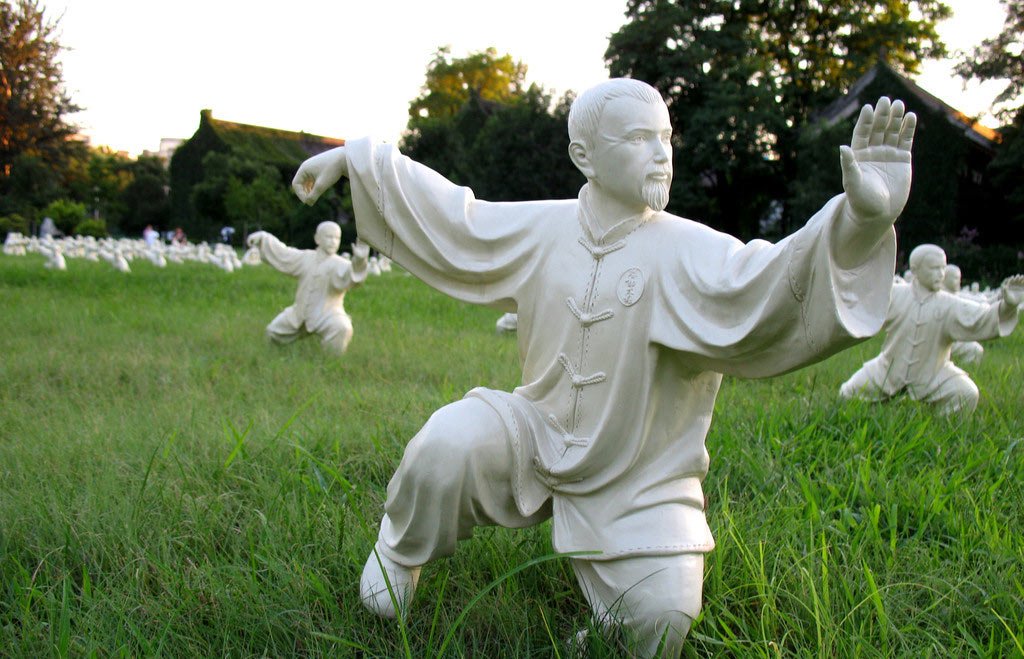Tai chi is often described as “meditation in motion,” but it might well be called “medication in motion.” There is growing evidence that this mind-body practice, which originated in China as a martial art, has value in treating or preventing many health problems. And you can get started even if you aren’t in top shape or the best of health.
In this low-impact, slow-motion exercise, you go without pausing through a series of motions named for animal actions — for example, “white crane spreads its wings” — or martial arts moves, such as “box both ears.” As you move, you breathe deeply and naturally, focusing your attention — as in some kinds of meditation — on your bodily sensations. Tai chi differs from other types of exercise in several respects. The movements are usually circular and never forced, the muscles are relaxed rather than tensed, the joints are not fully extended or bent, and connective tissues are not stretched.
Tai chi can be easily adapted for anyone, from the most fit to people confined to wheelchairs or recovering from surgery.

Origins and History:
Tai Chi, also known as Tai Chi Chuan, has deep roots in Chinese culture and philosophy. It is believed to have originated in the 17th century in the Chen village of Wenxian County, Henan Province, China. The art was developed by Chen Wangting, a martial artist, as a synthesis of existing Chinese martial arts techniques and Taoist principles.
Originally conceived as a martial art for self-defense, Tai Chi evolved over the centuries into various styles, each with its unique characteristics and forms. The most popular styles include Chen, Yang, Wu, and Sun, each named after the family or individual credited with its development.
The Essence of Tai Chi:
At its core, Tai Chi is characterized by slow, deliberate movements, often described as “moving meditation.” Practitioners flow seamlessly from one posture to another, focusing on breathing and inner awareness. The philosophy underlying Tai Chi emphasizes harmony, balance, and the integration of mind, body, and spirit.
Benefits of Practicing with a Qualified Instructor:
- Improved Balance and Flexibility: Tai Chi movements promote balance and flexibility, reducing the risk of falls, especially in older adults. A qualified instructor can guide students through proper body alignment and weight distribution to enhance stability.
- Stress Reduction and Relaxation: Tai Chi’s gentle, rhythmic movements have a calming effect on the nervous system, reducing stress and anxiety. An experienced instructor can teach relaxation techniques and mindfulness practices to cultivate a tranquil state of mind.
- Enhanced Strength and Coordination: Despite its gentle appearance, Tai Chi is a low-impact exercise that engages multiple muscle groups, improving strength and coordination over time. With proper instruction, students learn to move with fluidity and efficiency, maximizing physical benefits.
- Cardiovascular Health: While Tai Chi is primarily a gentle exercise, it can still elevate heart rate and promote cardiovascular health when practiced with intensity. An instructor can tailor routines to suit individual fitness levels and goals, ensuring a safe and effective workout.
- Pain Management: Tai Chi has been shown to alleviate chronic pain conditions such as arthritis, fibromyalgia, and lower back pain. Skilled instructors can modify movements and provide personalized guidance to address specific physical limitations or discomfort.
- Mind-Body Awareness: Tai Chi cultivates heightened awareness of body sensations, breath, and mental states, fostering a deeper connection between mind and body. Through guided practice, students develop mindfulness skills that extend beyond the studio into daily life.
- Community and Support: Joining a Tai Chi class led by a qualified instructor offers opportunities for social interaction, support, and camaraderie. Group settings provide motivation, accountability, and a sense of belonging, enhancing overall well-being.
William Potter of Firewater Healing Arts in San Diego teaches Tai Qi (Chee) in North County and San Diego.
I am text block. Click edit button to change this text. Lorem ipsum dolor sit amet, consectetur adipiscing elit. Ut elit tellus, luctus nec ullamcorper mattis, pulvinar dapibus leo.
